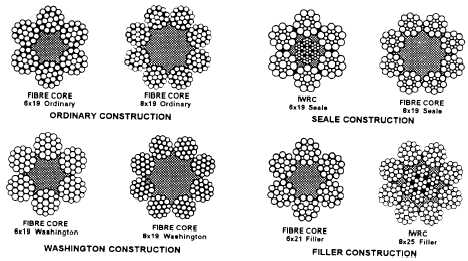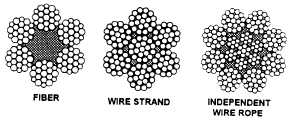Figure 13-2.—Common strand construction.
constructions are Ordinary, Seale, Warrington, and
Filler (fig. 13-2).
. Ordinary construction wires are all the same
size.
. Seale is where larger diameter wires are used on
the outside of the strand to resist abrasion and smaller
wires are inside to provide flexibility.
l Warrington is where alternate wires are large
and small to combine great flexibility with resistance to
abrasion.
l Filler is where very small wires fill in the valleys
between the outer and inner rows of wires to provide
good abrasion and fatigue resistance.
Core
The wire rope core supports the strands laid around
it. The three types of wire rope cores arc fiber, wire
strand, and independent wire rope (fig. 13-3).
Figure 13-3.—Core construction.
. A fiber core may be a hard fiber, such as manila,
hemp, plastic, paper, or sisal. The fiber core offers the
advantage of increased flexibility. It also serves as a
cushion to reduce the effects of sudden strain and acts
as an oil reservoir to lubricate the wire and strands (to
reduce friction). Wire rope with a fiber core is used when
flexibility of (he rope is important.
. A wire strand core resists more heat than a fiber
core and also adds about 15 percent to the strength of
the rope; however, the wire strand core makes the wire
rope less flexible than a fiber core.
. An independent wire rope core is a separate
wire rope over which the main strands of the rope are
laid. This core strengthens the rope, provides support
against crushing, and supplies maximum resistance to
heat.
GRADES OF WIRE ROPE
The three primary grades of wire rope are mild plow
steel, plow steel, and improved plow steel.
Mild Plow Steel Wire Rope
Mild plow steel wire rope is tough and pliable. It
can stand repeated strain and stress and has a tensile
strength (resistance to lengthwise stress) of from
200,000 to 220,000 pounds per square inch (psi). These
characteristics make it desirable for cable tool drilling
and other purposes where abrasion is encountered.
13-2




